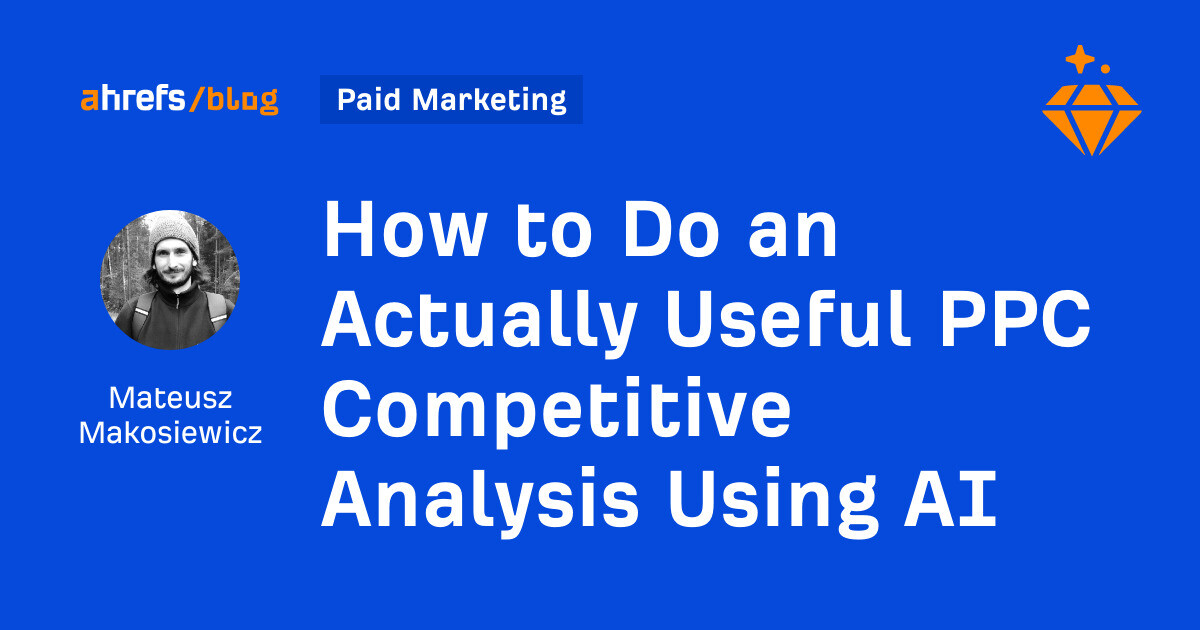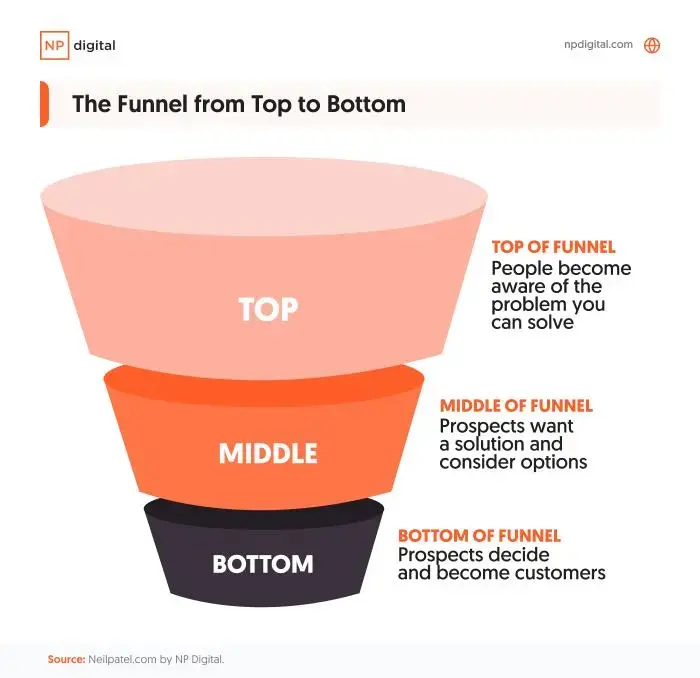Google’s Site Quality Score & Impact on Your Rankings
Google has long hinted at an internal site quality score – a domain or subdomain-level metric reflecting overall website quality. Unlike traditional page-level signals, this site-wide score is query-independent and influences how all pages on a site perform in...

Google has long hinted at an internal site quality score – a domain or subdomain-level metric reflecting overall website quality.
Unlike traditional page-level signals, this site-wide score is query-independent and influences how all pages on a site perform in search.
In fact, multiple Google patents describe systems for evaluating a website’s quality as a whole and using that score in rankings:
One Google patent (co-invented by Navneet Panda of “Panda” update fame) outlines determining a “score for a site…that represents a measure of quality for the site” based on user engagement data.
Specifically, it suggests measuring how long users spend on the site’s pages as a proxy for quality. This site quality score is then used as a ranking signal “to rank resources…found in one site relative to resources found in another site,” and even to decide how frequently to crawl or index pages from that.
In other words, if a site is deemed higher-quality, its pages might rank higher and be indexed more readily than those from a low-quality site.
Another patent describes computing a site’s quality via the ratio of certain user queries. It proposes a score where the numerator represents user interest in the site (e.g. number of unique queries explicitly referencing that site, like navigational or brand searches) and the denominator represents general user interest in the site’s pages (e.g. queries where the site’s pages appear among results.)
The resulting ratio effectively measures how much users seek out that site specifically versus just stumbling on it – a signal of the site’s authority and trust.
This patent, too, states the site quality score can be “used as a signal to rank search results… found in one site relative to… another”.
It even notes that a high site quality score might boost all pages on that site: “a site quality score for a site can be used as a term in the computation of scores for resources in that site,” meaning it can raise or lower page rankings based on the site’s overall reputation.
Notably, Google’s patents and writings treat “site quality” as a property that can apply at different scopes – an entire domain, a subdomain, or even a particular subdirectory can each be considered a “site” for quality scoring purposes.
This means Google could assess quality at the root domain level (example.com) or more granularly (e.g. en.example.com subdomain or example.com/blog/ section).
One patent even alludes to maintaining manual “whitelists” of high-quality sites and blacklists of low-quality sites determined offline – a reminder that early quality algorithms (like Panda) sometimes incorporated human-curated site assessments alongside algorithmic scoring.
In summary, Google’s own research and intellectual property confirm that site-wide quality signals exist.
These signals can influence rankings across all pages of a domain and eligibility for special search features.
A site with superior quality metrics (strong engagement, recognized authority, etc.) gains a kind of domain-level boost, whereas a site flagged as low-quality can see a site-wide demotion in rankings or reduced indexing frequency.
This aligns with what SEO practitioners observed during major updates like Panda: some sites were seemingly “graded” as a whole, rising or sinking together.
Data Insights: Quality vs. Visibility in Search Features
Beyond patents, SEO data studies and experiments have tried to quantify site quality and its impact on search visibility.
While Google doesn’t provide a public “site quality” score, third-party metrics (like Moz’s Domain Authority or Ahrefs’ Domain Rating) attempt to gauge a site’s overall strength.
These are imperfect metrics – often based on link signals – but they capture how domain-level reputation correlates with rankings.
More direct analyses, especially around Google’s algorithm updates and SERP features, offer clues to Google’s treatment of site quality:
Rich Results Eligibility:
There’s evidence that certain search enhancements (rich snippets, review stars, FAQ snippets, etc.) have a site-level quality threshold.
Google’s John Mueller has explicitly stated that “site quality can affect whether or not Google shows rich results from a site.” In one case, a website lost all its rich result snippets after a redesign; Mueller explained that a substantial change likely triggered Google to re-evaluate the site’s overall quality, causing rich results to be withheld.
https://youtu.be/rTcLkRkfkPs?t=3319
In short, even if you implement correct structured data, Google may refuse to display rich snippets if it perceives the site (as a whole) isn’t meeting quality standards. The important takeaway is that poor site quality can be the reason rich results don’t show up.
Core Updates and Visibility:
Broad core algorithm updates often underscore the impact of site-wide quality.
For example, the March 2024 Core Update (one of Google’s largest in recent years) “was targeted at cleaning up low-quality, often AI-generated content cluttering search results”.
Using Sistrix’s Visibility Index (an SEO metric that aggregates a domain’s Google rankings into a single score), they found that out of 70 leading news publishers, 55 sites saw their visibility drop after this update. Many declines were dramatic double-digit falls in visibility.
Even authoritative sites were not immune – e.g. BBC News lost 37% of its Google search visibility within six weeks.
Google confirmed the update was meant “to tackle ‘spam and low quality content’” in search.
The pattern here suggests that entire domains were algorithmically reassessed; sites with a higher proportion of thin, duplicative, or unhelpful content got dinged across the board.
Conversely, the few publishers that gained or were unscathed likely had consistently robust content and user satisfaction. This aligns with Google’s guidance that there’s no specific “fix” for core update drops aside from “improving overall site quality” – meaning the site as a whole needs to be made more valuable.
SEO Industry Studies
Various SEO tool providers have explored correlations between domain-level metrics and special search features.
For instance, Ahrefs once studied millions of search results to see what factors correlated with Featured Snippets and other SERP features. While those studies focus more on page-level content relevance, they often note that sites earning featured snippets tend to be authoritative domains (high “domain rating” and many quality backlinks).
This implies an underlying site trust factor – Google is more likely to elevate content (especially in a snippet or answer box) from a site that it deems generally trustworthy. Similarly, Sistrix’s studies on which sites capture rich snippets or sit atop “People Also Ask” often highlight known high-quality sites.
It’s difficult to separate site quality from page quality in such analyses, but the trend is that strong domains (brand authority, user trust, etc.) have an easier time gaining and retaining visibility enhancements.
On the flip side, sites with a history of search quality issues (like past penalties or low-quality content) often struggle to attain rich results, even if their markup is correct. These patterns back the idea of a site-wide quality evaluation gating certain features.
Structured Data Experiments
Anecdotally, many SEOs have observed that simply adding Schema markup doesn’t guarantee rich results – the domain’s reputation matters.
In an experiment conducted by Stan Ventures on lesser-known or lower-quality sites, we were able to find that implementing structured data for FAQs, How-To, etc., sometimes saw no rich snippets until the site improved other signals (like better content, more engagement, or just time to earn trust).
This is in line with Google’s documents that confirms structured data makes you eligible for rich results but doesn’t guarantee them.
The missing ingredient that often limits the sites from appearing on rich snippets is the site reputation.
In fact, we at Stan Ventures are increasingly seeing the same pattern for the results that show up in AI Overviews and Gemini Citations.
As Google’s Search Liaison Danny Sullivan has hinted, if rich results aren’t showing and you’ve done everything technically right, consider overall site quality – that might be what’s holding you back.
In short, public data and SEO case studies strongly suggest a correlation between site-level quality and search visibility outcomes. High-quality sites tend to weather core updates better and are more readily rewarded with rich results and other enhancements.
Low-quality sites often see broad losses in rankings and features when Google updates its algorithms. While quality is hard to quantify directly, tools like Sistrix’s Visibility Index or SEMrush’s Sensor can clearly illustrate the site-wide impact of quality-focused changes.
Google Insiders on Site Quality, Trust & E-E-A-T
Google’s own representatives have repeatedly affirmed the importance of site-wide quality while dispelling the notion of any single “quality score” that webmasters can monitor.
In various Webmaster Hangouts, conference talks, and podcasts, Googlers have provided insights into how they assess “quality” and what it means for SEOs. Here are some key expert perspectives:
Quality is a Site-Level Signal
Google’s John Mueller has plainly stated that “quality is a site-level signal.” In a June 2021 office-hours, he explained that while Google indexes and ranks page by page, “there are some signals that we can’t reliably collect on a per-page basis where we do need to have a better understanding of the overall site. And quality kind of falls into that category.”
In other words, Google evaluates certain aspects of your content and reputation across the entire site. You can’t just have one fantastic page and assume its quality will outweigh lots of mediocre pages.
Mueller also gave an example on Twitter: “Have many older low-quality pages? Yes, that can hurt your site in Search. Google looks at the website overall, so if it sees a lot of low-quality content, then Google can take that into account for rankings.”
This echoes what SEOs learned from Panda updates – having a mix of high and low-quality content can drag down the whole site, so it’s best to “deal with all quality problems” rather than leave pockets of thin content hanging around.
E-E-A-T is real, but not a single metric: Experience, Expertise, Authoritativeness, Trustworthiness (E-E-A-T) is a framework from Google’s Quality Rater Guidelines that many believe is baked into algorithms.
Gary Illyes (Google analyst) clarified at PubCon 2019 that there is “no internal E-A-T score or YMYL score.” Instead, “Google has a collection of millions of tiny algorithms that work in unison to spit out a ranking score. Many of those baby algorithms look for signals in pages or content… When you put them together… they can be conceptualized as E-A-T (now E-E-A-T.”
In other words, Google doesn’t assign your site a numeric “E-E-A-T score,” but it does evaluate many factors that collectively correspond to how experts or quality raters would judge your site.
These factors likely include things like author credentials, site reputation (links/mentions), content accuracy, user engagement, etc. It’s a complex, holistic assessment. This means a site’s trust or quality is multi-faceted – there isn’t one dial to turn or one metric to optimize.
Illyes compared it to PageRank: not directly observable, but its effects are real. So while you cannot measure E-A-T directly, you can infer it from how a site performs, especially on YMYL (Your Money Your Life) topics where trust is critical.
No “tool” can measure site quality
In a 2023 Search Off The Record podcast, Mueller, Illyes, and Martin Splitt discussed how site quality is often misunderstood. They noted that unlike technical issues (where you have Lighthouse or Search Console reports), there’s no definitive tool or score for site quality.
Traffic drops can tell you something’s wrong, but not why. Gary Illyes remarked on metrics like page views or bounce rate: “I found the up-down metric completely useless because you still have to figure out what’s wrong… 99.7% of people are downvoting it [your page] and you’re like, ‘Why?’”.
The Googlers sympathized that it’s hard for site owners to assess their own quality objectively – everyone thinks their content is “perfect and useful,” but users (and Google) might disagree.
The actionable advice here is to critically review your site from a user’s perspective or get outside opinions. If 9 out of the top 10 results for a query are from sites with a certain level of depth, polish, or authority, and your page is the outlier, that’s a hint it might not meet the quality bar.
Site Quality Isn’t Rocket Science (It’s About Users):
Perhaps the most reassuring insight came when Martin Splitt and Gary Illyes mused that site quality is simpler than people think. Illyes suggested reframing the question entirely:
“What if quality is actually simpler than… most people think? What if it’s about writing the thing that will help people achieve whatever they need to achieve when they come to the page? And that’s it.”
In other words, forget trying to game some elusive “quality score” – just focus on whether your content fulfills the user’s intent effectively. Are you giving them what they came for (and then some)? If yes, you’re on the right track. If not – if your page is just one of many cookie-cutter entries or it leaves users wanting – then no amount of technical optimization will save it.
Splitt echoed that one should review pages critically: if there are 9,000 other pages like yours, “Is this really adding value to the Internet? …It’s a good page, but who needs it?”.
Google’s John Mueller, in that same discussion, agreed that simply reproducing content that already exists adds no value. To break into search results, especially competitive ones, you need to offer something uniquely valuable – “something above the baseline of what is already in the SERPs”.
This goes to the heart of site quality: uniqueness, usefulness, and user satisfaction.
Overall usability and trust signals matter:
Quality isn’t just about text on a page. It also encompasses things like site usability, design, and user experience. Mueller has noted that in core updates, Google looks at “the relevance of the site overall (including content quality, UX issues, ads on the page, how things are presented)”.
Excessive or intrusive ads, for example, can hurt the perceived quality. A site that’s technically slow or frustrates users can undermine trust.
Google’s Paul Haahr (a ranking engineer) once said if two pages are equal in relevance, “sitewide signals can help individual pages”– meaning, the site with a better reputation, faster performance, or more trusted brand may win out.
Core Web Vitals (page experience signals) are mostly page-specific, but they can have a cumulative effect if many pages on a site are slow or unstable. In short, Google evaluates some quality aspects at the domain level – including how users perceive your brand and site as a whole (sometimes called “Domain Authority” in the SEO world, though Google doesn’t use that term publicly).
Mythbusting – Duplicate Content and Site Quality:
One specific myth the Googlers dispelled is that duplicate content on your site will earn you a “low quality” label. Martin Splitt recently clarified that “duplicate content doesn’t negatively impact a site’s quality in Google’s eyes.”
It won’t incur a penalty by itself. The real issue with duplicate or near-duplicate pages is an operational one: it can “slow down crawling and make performance tracking difficult,” and duplicate pages might compete with each other in rankings, which, in SEO terms, is called cannibalization.
Essentially, it’s a waste of crawl budget and can confuse your analytics, but it’s not viewed as a sign your site is untrustworthy. Splitt said some people mistakenly think duplicates influence perceived quality, “but it doesn’t.”
You should still tidy up duplicate or thin variant pages (through canonical tags, consolidating content, etc.) for efficiency, but don’t imagine Google is outright penalizing your site for them.
This insight helps advanced SEOs focus their quality improvements on what actually matters – user-facing quality – rather than obsess over, say, a few pages with overlapping text.
To summarize the Google insiders’ perspective, site quality is definitely a factor, but it’s a broad, multifaceted concept rather than a single score.
Google’s algorithms approximate human judgment of quality (as in the Quality Rater Guidelines) through many signals. They look at your site in aggregate: content, design, reputation, and user happiness.
If a large portion of your site is low-value, it can diminish the whole site’s performance. If your site is generally great, a few weak pages won’t tank you, but they won’t help either.
There’s no one-number metric for us to monitor and no hack to raise it overnight. The “secret,” as Googlers stress, is pretty simple: make your website the best answer for users – in content, in experience, in trust – and the site-level signals will take care of themselves.
Usability and Trustworthiness
Website quality isn’t just about textual content. Real-world SEO improvements have come from focusing on user experience (UX) and perceived trust, which are quality signals too.
A well-known example is the “Top Heavy” algorithm (2012), which targeted sites with too many ads above the fold. Later, Google updated this by including it as part of the intrusive interstitial element update, which is now part of the Google Page Experience algorithm.
Sites that got hit removed ads and popups or improved their content-to-ad ratio and saw traffic rebound. This wasn’t a content change per se but a quality improvement in terms of UX (users don’t like excessive ads, so Google counts that against you).
Many sites saw minor boosts in 2021 after implementing improvements for the Page Experience Update (Core Web Vitals). While that update was a lightweight ranking factor, sites that fixed slow loading and layout shifts often reported better user engagement and slightly better rankings.
It’s hard to tell if the rankings were from the direct algorithmic boost or indirect effects (happy users, lower bounce rates = better “quality” signals), but either way, improving UX proved beneficial without even touching content.
On the trust side, consider HTTPS. When Google made HTTPS a ranking factor, sites that migrated to HTTPS occasionally saw an uptick in rankings. But more importantly, users trust secure sites – which can translate to better engagement and perhaps better reviews/mentions off-site. All these feed back into how Google might perceive your site’s overall trustworthiness.
Key Takeaways
The concept of a “site quality score” is both intriguing and a bit opaque. We can’t measure it directly, but its effects are felt.
Here are the big takeaways and action items from our research:
Google does evaluate site-wide quality
As confirmed by patents and Googlers, Google assesses quality at the domain or subdomain level and uses it in ranking algorithms.
A preponderance of low-quality pages can drag down your entire domain, while a strong reputation can lift even the “okay” pages. Optimize your overall site, not just individual pages in isolation.
Site quality impacts more than rankings – it affects visibility features:
Poor site quality can make you ineligible for rich results and other enhancements. Google might silently apply a “quality filter” that limits your exposure. If you’re struggling to get rich snippets, Top Stories inclusion, etc., inspect your site’s content depth, accuracy, and user satisfaction signals. Conversely, high-quality sites tend to dominate those SERP features.
There’s no single metric for quality:
You won’t find a “site quality” number in Google Analytics. Instead, monitor a basket of signals: organic traffic trends (especially after core updates), user engagement metrics (time on site, bounce rate, repeat visitors), third-party scores (Domain Authority, Trust Flow), brand search volume, and even manual site reviews using the Quality Rater Guidelines.
A sudden drop in many pages’ rankings likely signals a site-level issue. Tools like Ahrefs and SEMRush can help track your domain’s overall health over time.
Prune and improve content regularly:
Conduct periodic content audits. Merge or remove pages that are thin, outdated, or low-performing (especially if they don’t get search traffic anyway). This can raise the average quality of your indexed content.
Focus on E-E-A-T elements (Experience, Expertise, Authority, Trust). While there’s no direct E-E-A-T score, these are the lenses through which quality is often judged.
Ensure your money/health/finance content is written or reviewed by credible experts. Showcase author credentials. Earn mentions or links from authoritative sites in your niche. Build trust through transparency – robust About pages, contact info, privacy policies, and user reviews if applicable. All these site-level elements contribute to Google’s confidence in your site.
User experience is a quality factor. A site that is mobile-friendly, fast, and pleasant to use will encourage longer visits – feeding positive engagement signals back to Google. By contrast, a spammy UI or ad-cluttered layout screams “low quality.”
Take a hard look at your site’s UX: Would you enjoy consuming content there, or does it feel like a content mill? Improve navigation, design, and speed in tandem with content quality.
In essence, site quality is holistic SEO at the highest level. It’s the sum of your content, your user experience, your reputation, and how all of that compares to alternatives.
SEOs should treat site quality improvement as a perpetual project, much like one would treat product quality in a company – always room to iterate and better serve your users. The better you do that, the more Google will trust your domain and all the pages on it.
Want help to optimize your website to the fullest so that Google finds all ingredients to rank you on top of the search results? Connect with our team and we will help you implement the right strategies to boost your website’s quality score.
Get Your Free SEO Audit Now!
Enter your website URL below, and we'll send you a comprehensive SEO report detailing how you can improve your site's visibility and ranking.

 Hollif
Hollif 































